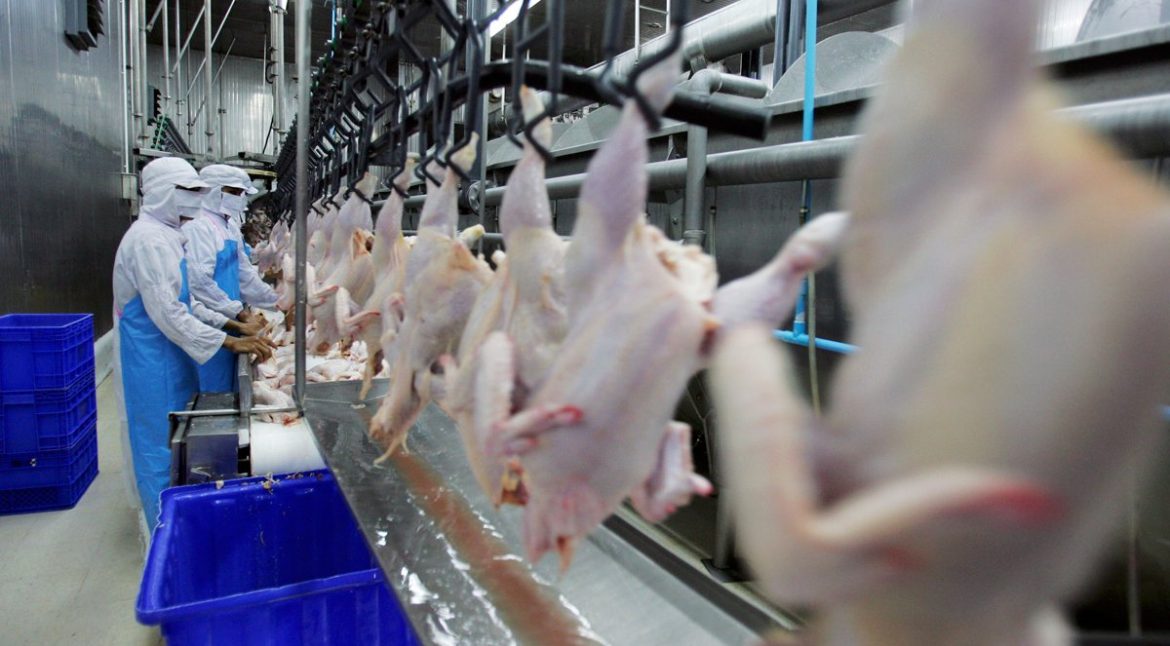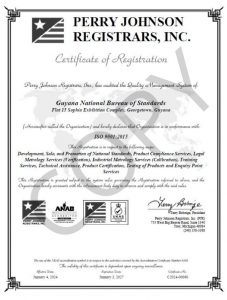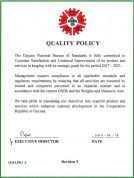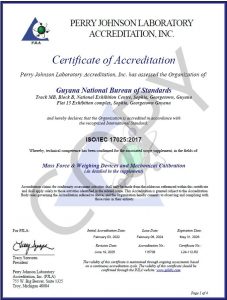As our country continues to observe Agriculture Month, we must acknowledge that the poultry industry in Guyana is experiencing steady growth to meet the rising demand for poultry meat, driven by fast-food chains, restaurants, offshore operators, and other consumers. Inclusive of ducks, chickens, and turkeys, it is essential to process the meat from these birds under stringent conditions to ensure it remains uncontaminated and free from spoilage.
To produce wholesome poultry meats, the Guyana National Bureau of Standards (GNBS) recommends the use of the National Standard GCP 13: 2005 “Code of Practice for Poultry processing.” The standard is applicable to all establishments in which poultry is slaughtered, packed, or otherwise handled during preparation, and all establishments in which poultry cuts and parts are processed, packed, or otherwise handled.
As the National Standards Body (NSB), the GNBS encourages new and traditional producers of poultry meat, processors and other stakeholders to acquire a copy of the standard and implement the requirements therein, to guarantee the safest output. The document specifies requirements for poultry meat which have not yet been treated in any way to ensure their preservation, except that it has been chilled or frozen.
Importantly, the standard does not cover requirements for poultry rearing but includes general requirements for the poultry holding or display pens, removal of live unfit birds, waste disposal and pest control. The areas covered are critical for quality and safety of consumers. Regarding holding pens, these structures shall not constitute a hazard to the health of the birds while the materials used to construct the pens shall facilitate ventilation and thorough cleaning.
For conformance, unfit poultry also shall be segregated prior to delivery at the processing facility and disposed of in an appropriate manner. It is recommended that adequate precautions are taken to dispose of waste in a manner that does not constitute public health or hygienic hazard or contaminate the meat. Meanwhile, pest control and other measures shall be taken to protect the live birds from other animals, insects and contamination from vermin, substances and other birds.
For processors, the standard addresses processing facilities and operating requirements. Key components outlined in the document include plant registration, construction and layout, location, size, water supply, lighting, ventilation, sanitary design facilities and control.
For equipment and utensils, aspects covered include processing tables and handling tools, sanitary design, construction and installation, bleeding and blood collection and processing equipment.
The Code of Practice also addresses operating requirements. These requirements relate to Sanitary maintenance of processing facilities, cleaning routine, pest control and hygiene and health of personnel.
Poultry processors can be guided by the operational practices and production requirements stated in the standard, which focus on inspection and grading, preparation and processing, packaging and labelling, storage and transport of the finished product, waste disposal, import requirements and laboratory control procedures.
Finally, in addition to the Code of Practice for Poultry processing, other available poultry related standards are the Specification for poultry and poultry products (GYS 210, 20217), Specification for poultry feed and feed ingredients (GYS 58:2006), Code of Practice for the operations of hatcheries (GCP 27:2006), and Specification for labelling of table eggs (GYS 273:2006). To view a full list of the agriculture standards, visit the Standards Portal at www/gnbsguy.com.
For further information, contact the GNBS on telephone numbers: 219-0064/65//66, hotline 219-0069 or WhatsApp us on 692-4627.






